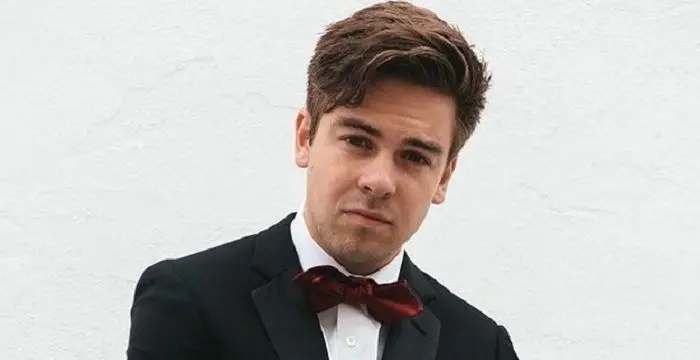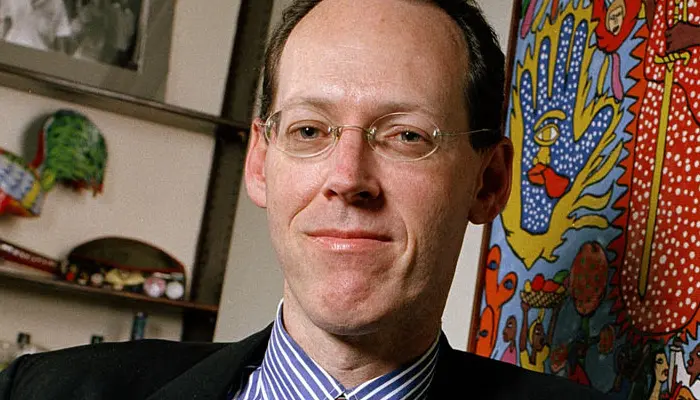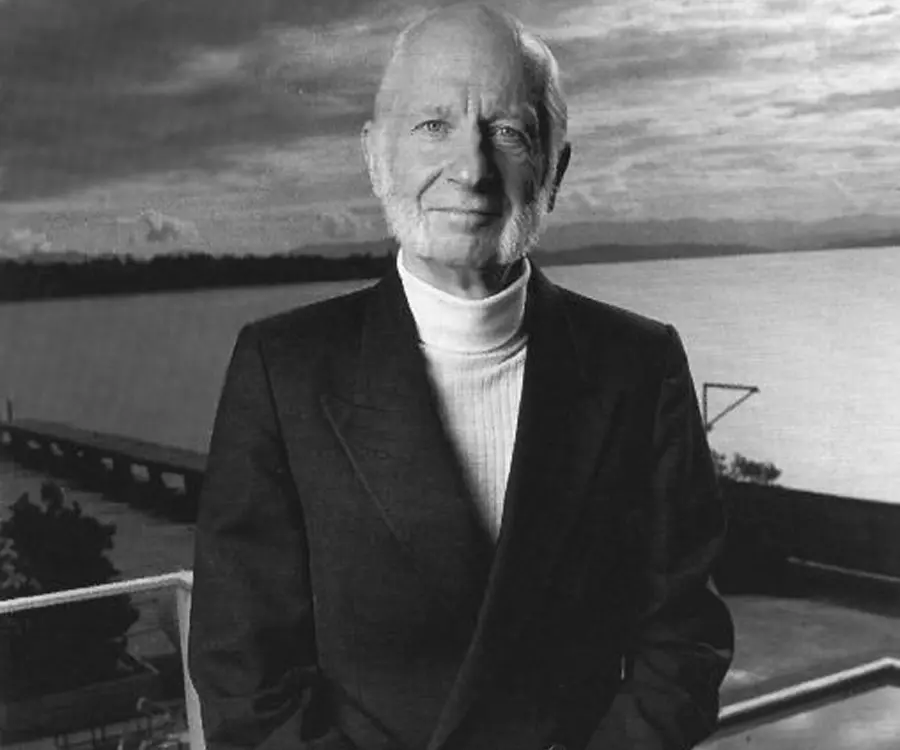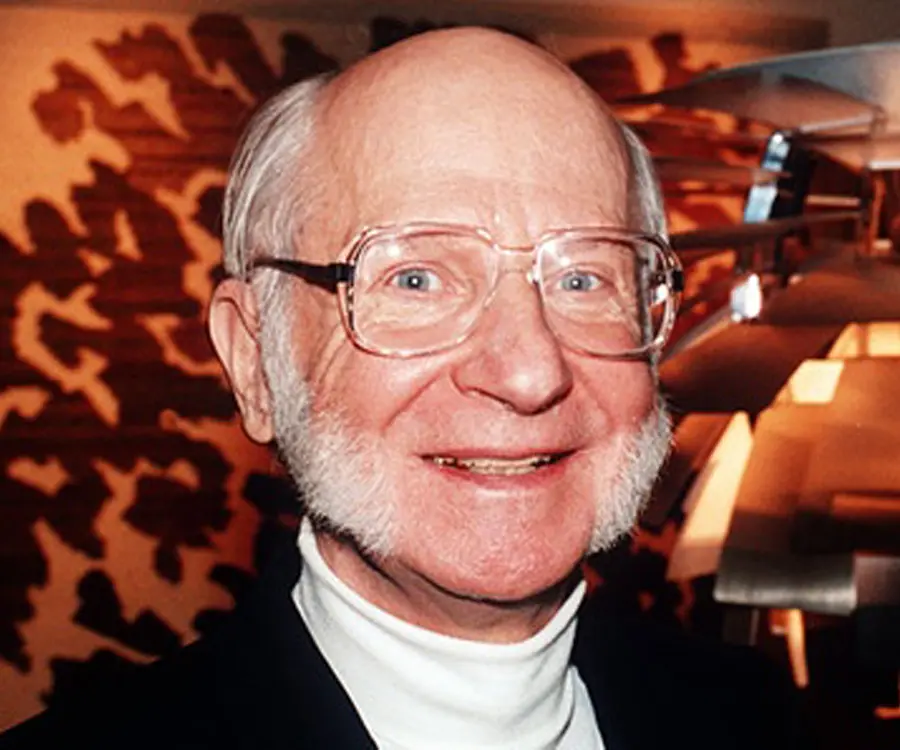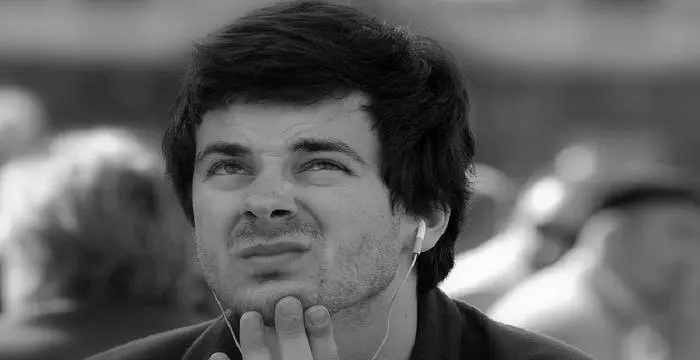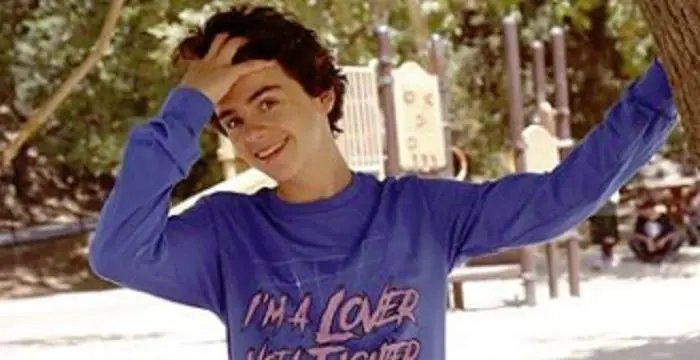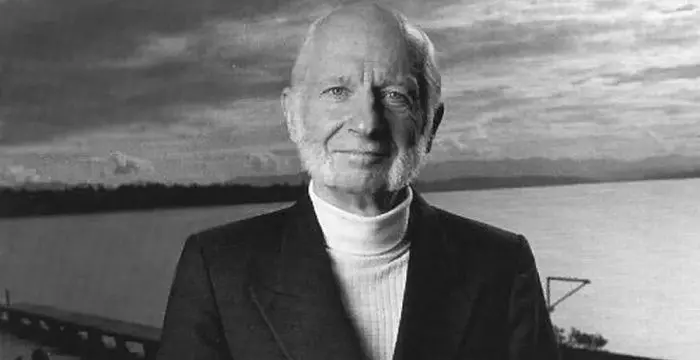
Hans Georg Dehmelt - Scientists, Timeline and Life
Hans Georg Dehmelt's Personal Details
Hans Georg Dehmelt is a German born American physicist who developed the ion trap technique
| Information | Detail |
|---|---|
| Birthday | September 9, 1922 |
| Nationality | German, American |
| Famous | Duke University, Scientists, Physicists |
| Spouses | Diana Dundore, Irmgard Lassow |
| Childrens | Gerd |
| Universities |
|
| Notable Alumnis |
|
| Birth Place | Görlitz, Germany |
| Born Country | Germany |
| Gender | Male |
| Father | Georg Dehmelt |
| Sun Sign | Virgo |
| Born in | Görlitz, Germany |
| Famous as | Physicist |
// Famous Duke University
Cody Ko
Cody Ko is a Canadian Vine sensation and YouTube personality. Check out this biography to know about his childhood, family life, achievements and fun facts about him.
Paul Farmer
Paul Farmer is an anthropologist and physician who co-founded the health organization - Partners In Health (PIH). This biography of Paul Farmer provides detailed information about his childhood, life, achievements, works & timeline.
Britt Nicole
Britt Nicole is a singer and songwriter known for her album ‘Gold.’ Check out this biography to know about her birthday, childhood, family life, achievements and fun facts about her.
Hans Georg Dehmelt's photo
Who is Hans Georg Dehmelt?
Hans Georg Dehmelt is a German-born American physicist, who was awarded the Nobel Prize in Physics in 1989, for co-developing the ion trap technique, popularly called Penning trap, with Wolfgang Paul. The duo shared one half of the prize as the other half was awarded to Norman Foster Ramsey. The Penning trap is an electromagnetic device that can hold small numbers of ions or electrically charged atoms and electrons for long periods of time, thus allowing the study of their properties. Though Dehmelt discovered the Penning trap in the 1950s, it was only in early 1970s that he put the device to use. He isolated a single electron for observation, an unprecedented feat that opened the way for the precise measurement of key properties of electrons. However, this wasn’t all as Dehmelt also developed methods for measuring atomic frequencies and individual quantum jumps with unprecedented precision. Dehmelt’s love for physics started early. He soon found himself deeply embroiled in physics principles and properties and no sooner made the subject his academic pursuit. Apart from scientific research, Dehmelt has chaired several academic positions. He served as the professor of physics at the University of Washington since 1961, duly retiring from the educational organisation in 2002 as Professor Emeritus.
// Famous Scientists
Juliane Koepcke
Juliane Koepcke is a German-Peruvian biologist, who was the lone survivor among the 92 passengers and crew of the ill-fated LANSA Flight 508 that crashed in the Peruvian rainforest on 24 December 1971. Know more about her life in this biography.
Henry Cavendish
Henry Cavendish was a theoretical chemist and physicist, renowned for discovery of hydrogen and calculation of the mass of earth. To know more about his childhood, profile, timeline and career read on
Konstantin Tsiolkovsky
Konstantin Tsiolkovsky was a Russian rocket scientist and a pioneer of astronautics. This biography provides detailed information about his childhood, family, personal life, career, achievements, etc.
Childhood & Early Life
Hans Georg Dehmelt was born on September 9, 1922 in Gorlitz, Germany. His father, Georg Dehmelt was a law graduate who made his living in real estate.
Young Dehmelt’s growing up years was marred by social upheaval. The world was reeling under the pain of World War I and political instability. Nevertheless, he did not let this mar his academic interest. At the age of ten, he gained scholarship at the Gymnasium zum Grauen Kloster.
Since early, he developed immense interest in physics. He supplemented his school curriculum with self-education. He voraciously read books on radio that deepened his interest in physics. He soon briefed himself with important physics principles. Dehmelt graduated from the Gymnasium in 1940.
Following his graduation, he volunteered for service in the German Army in 1940 as a gun crew. He rose to the rank of senior private. Luckily, in 1943, Dehmelt was ordered back to Germany to study physics under an army program at the University of Breslau. After a year of study, he returned to army service but was captured during the Battle of the Bulge.
Released from an American prisoner of war camp in 1946, Dehmelt returned to study physics at the University of Göttingen, where he supported himself by repairing and bartering old, pre-war radio sets.
In 1948, Dehmelt completed his master's thesis on Thomson mass spectrograph under Peter Brix in Kopfermann’s Institute and later in 1950 received his PhD from the Institute under Hubert Kruger. In 1949, Kruger and Dehmelt had discovered Nuclear Quadrupole Resonance. His doctoral thesis was based on this discovery.
Career
Dehmelt’s PhD work on Nuclear Quadrupole Resonance earned him an invitation to join Walter Gordy's well-known microwave laboratory at Duke University as postdoctoral associate. Therein, he befriended James Frank, Fritz London, Lothar Nordheim and Hertha Sponer.
Dehmelt earned himself a visiting assistant professorship appointment at the University of Washington in Seattle, Washingtonin 1955. His work involved advising Edwin Uehling's students during the latter’s sabbatical and doing independent research. No sooner than in 1958, he was made associate professor and by 1961, gained full professorship.
In 1955, Dehmelt built his first electron impact tube in George Volkoffs laboratory. The following year, based on his study and learning from seminars at Gottingen, he carried out the experiment Paramagnetic Resonance Reorientation of Atoms and Ions Aligned by Electron Impact. For the first time, Dehmelt indicated usefulness of ion trapping for high resolution spectroscopy.
In 1956, Dehmelt efficiently produced and monitored a polarized atom cloud through his paper, Slow Spin Relaxation of Optically Polarized Sodium Atoms. The ion trapping for high resolution spectroscopy gave Dehmelt the idea for his 1958 experiment Spin Resonance of Free Electrons Polarized by Exchange Collisions.
Before Dehmelt was to conduct his 1958 Spin Resonance experiment, it was necessary for him to learn how to produce polarized atoms which could transfer their orientation to trapped electrons. By trapping the electrons in a neutralizing ion cloud slowly diffusing in the buffer gas, he was able to carry out the experiment.
Unconvinced by the plasma trapping scheme, Dehmelt looked for an alternative method to trap electron ions. In 1959, he successfully built his first high vacuum magnetron trap. With the new method, he was able to trap electrons for about 10 sec and to detect axial, magnetron and cyclotron resonances. Dehmelt’s Penning trap helped confine electrons and ions in a small space for long periods of time in relative isolation.
In the 1960s decade, Dehmelt together with his students started working on spectroscopy of hydrogen and helium ions. In 1973, he used his device to isolate a single electron for observation. It marked an unprecedented feat as the isolation helped in the precise measurement of key properties of electrons.
Following his successful electron isolation, Dehmelt along with his colleagues developed methods for measuring atomic frequencies and individual quantum jumps with unmatched precision. In the 1970s Dehmelt used his trap to measure an electron’s magnetic moment to an accuracy of four parts in a trillion, the most precise measurement of that quantity at the time.
In 1976, he created first Geonium atom. He used it for measuring precise magnetic moments of the electron and positron. In 1979, under the leadership of Dehmelt, a team took the first photo of a single atom. It was phenomenal as it forwarded opportunity to study the properties and spectrums of individual atoms under constant conditions for longer periods.
He continued his work in the field of ion trapping well into the 21st century. He retired from the University of Washington in 2002, as Professor Emeritus.
Major Works
Dehmelt’s most outstanding career achievement has been the development of the ion trapping method. In the decade of 1950s, he successfully developed a method to capture charged atoms or ions in a trap using magnetic field. Dehmelt then went further by using the device for electron isolation in 1973. The electron isolation opened the gateway for the precise measurement of key properties of electrons.
Awards & Achievements
In 1970, Dehmelt received the Davisson-Germer Prize.
In the 1980s, he was felicitated with the Rumford Prize in 1985 and later with the Nobel Prize in Physics in 1989. He shared one half of the prize with Wolfgang Paul, the other half being awarded to Norman Foster Ramsey.
In 1995, Dehmelt received the prestigious National Medal of Science.
In 2010, Dehmelt was honoured with the Washington’s Nobel Laureates by Crown Princess Victoria of Sweden at a special event in Seattle.
Personal Life & Legacy
Dehmelt has married twice in his life. The first was to Irmgard Lassow who unfortunately died. He then married Diana Dundore. He has a son, Gerd from his first marriage to Lassow.
// Famous Physicists
Henry Cavendish
Henry Cavendish was a theoretical chemist and physicist, renowned for discovery of hydrogen and calculation of the mass of earth. To know more about his childhood, profile, timeline and career read on
Walter Kohn
Nobel Laureate Walter Kohn was an Austrian-born American theoretical chemist and physicist. Check out this biography to know about his childhood, life, achievements, works & timeline.
Nikola Tesla
Nikola Tesla was a Serbian-American inventor, best known for his development of alternating current electrical systems. This biography of Nikola Tesla provides detailed information about his childhood, life, achievements, works & timeline.
Hans Georg Dehmelt's awards
| Year | Name | Award |
|---|---|---|
Other | ||
| 0 | Nobel Prize in Physics (1989) | |
Hans Georg Dehmelt biography timelines
- // 9th Sep 1922Hans Georg Dehmelt was born on September 9, 1922 in Gorlitz, Germany. His father, Georg Dehmelt was a law graduate who made his living in real estate.
- // 1940Since early, he developed immense interest in physics. He supplemented his school curriculum with self-education. He voraciously read books on radio that deepened his interest in physics. He soon briefed himself with important physics principles. Dehmelt graduated from the Gymnasium in 1940.
- // 1940 To 1943Following his graduation, he volunteered for service in the German Army in 1940 as a gun crew. He rose to the rank of senior private. Luckily, in 1943, Dehmelt was ordered back to Germany to study physics under an army program at the University of Breslau. After a year of study, he returned to army service but was captured during the Battle of the Bulge.
- // 1946Released from an American prisoner of war camp in 1946, Dehmelt returned to study physics at the University of Göttingen, where he supported himself by repairing and bartering old, pre-war radio sets.
- // 1955In 1955, Dehmelt built his first electron impact tube in George Volkoffs laboratory. The following year, based on his study and learning from seminars at Gottingen, he carried out the experiment Paramagnetic Resonance Reorientation of Atoms and Ions Aligned by Electron Impact. For the first time, Dehmelt indicated usefulness of ion trapping for high resolution spectroscopy.
- // 1956 To 1958In 1956, Dehmelt efficiently produced and monitored a polarized atom cloud through his paper, Slow Spin Relaxation of Optically Polarized Sodium Atoms. The ion trapping for high resolution spectroscopy gave Dehmelt the idea for his 1958 experiment Spin Resonance of Free Electrons Polarized by Exchange Collisions.
- // 1958Before Dehmelt was to conduct his 1958 Spin Resonance experiment, it was necessary for him to learn how to produce polarized atoms which could transfer their orientation to trapped electrons. By trapping the electrons in a neutralizing ion cloud slowly diffusing in the buffer gas, he was able to carry out the experiment.
- // 1959Unconvinced by the plasma trapping scheme, Dehmelt looked for an alternative method to trap electron ions. In 1959, he successfully built his first high vacuum magnetron trap. With the new method, he was able to trap electrons for about 10 sec and to detect axial, magnetron and cyclotron resonances. Dehmelt’s Penning trap helped confine electrons and ions in a small space for long periods of time in relative isolation.
- // 1970In 1970, Dehmelt received the Davisson-Germer Prize.
- // 1973In the 1960s decade, Dehmelt together with his students started working on spectroscopy of hydrogen and helium ions. In 1973, he used his device to isolate a single electron for observation. It marked an unprecedented feat as the isolation helped in the precise measurement of key properties of electrons.
- // 1973Dehmelt’s most outstanding career achievement has been the development of the ion trapping method. In the decade of 1950s, he successfully developed a method to capture charged atoms or ions in a trap using magnetic field. Dehmelt then went further by using the device for electron isolation in 1973. The electron isolation opened the gateway for the precise measurement of key properties of electrons.
- // 1976 To 1979In 1976, he created first Geonium atom. He used it for measuring precise magnetic moments of the electron and positron. In 1979, under the leadership of Dehmelt, a team took the first photo of a single atom. It was phenomenal as it forwarded opportunity to study the properties and spectrums of individual atoms under constant conditions for longer periods.
- // 1985 To 1989In the 1980s, he was felicitated with the Rumford Prize in 1985 and later with the Nobel Prize in Physics in 1989. He shared one half of the prize with Wolfgang Paul, the other half being awarded to Norman Foster Ramsey.
- // 1995In 1995, Dehmelt received the prestigious National Medal of Science.
- // 2002He continued his work in the field of ion trapping well into the 21st century. He retired from the University of Washington in 2002, as Professor Emeritus.
- // 2010In 2010, Dehmelt was honoured with the Washington’s Nobel Laureates by Crown Princess Victoria of Sweden at a special event in Seattle.
// Famous Virgo Celebrities peoples
Temple Grandin
Temple Grandin is a well-known American writer, autistic activist and animal expert. This biography profiles her childhood, life, achievements, career and timeline
Alex Holtti
Check out all that you wanted to know about Alex Holtti, the famous Danish Viner & YouTuber; his birthday, his family and personal life, his girlfriends, fun trivia facts and more.
Benjamin Atkinson
Benjamin Atkinson is the son of the world-renowned British actor and comedian, Rowan Atkinson. Check out this biography to know about his childhood, family, personal life, including his age, birthday, etc.
Jack Dylan Grazer
Jack Dylan Grazer is an American actor known mainly for his performance in the movie version of ‘Stephen King’s novel ‘It.’ Check out this biography to know about his childhood, family, personal life, birthday, etc.
Ted Williams
Ted Williams was an American baseball player. Read this biography to learn more about his profile, childhood, life and timeline.
Mia Diaz
All about American dancer and actor Mia Diaz, including her age, family life, birthday, boyfriends, net worth, and some fun facts.
Hans Georg Dehmelt's FAQ
What is Hans Georg Dehmelt birthday?
Hans Georg Dehmelt was born at 1922-09-09
Where is Hans Georg Dehmelt's birth place?
Hans Georg Dehmelt was born in Görlitz, Germany
What is Hans Georg Dehmelt nationalities?
Hans Georg Dehmelt's nationalities is German, American
Who is Hans Georg Dehmelt spouses?
Hans Georg Dehmelt's spouses is Diana Dundore, Irmgard Lassow
Who is Hans Georg Dehmelt childrens?
Hans Georg Dehmelt's childrens is Gerd
What was Hans Georg Dehmelt universities?
Hans Georg Dehmelt studied at Duke University, University of Göttingen
What was Hans Georg Dehmelt notable alumnis?
Hans Georg Dehmelt's notable alumnis is Duke University
Who is Hans Georg Dehmelt's father?
Hans Georg Dehmelt's father is Georg Dehmelt
What is Hans Georg Dehmelt's sun sign?
Hans Georg Dehmelt is Virgo
How famous is Hans Georg Dehmelt?
Hans Georg Dehmelt is famouse as Physicist
